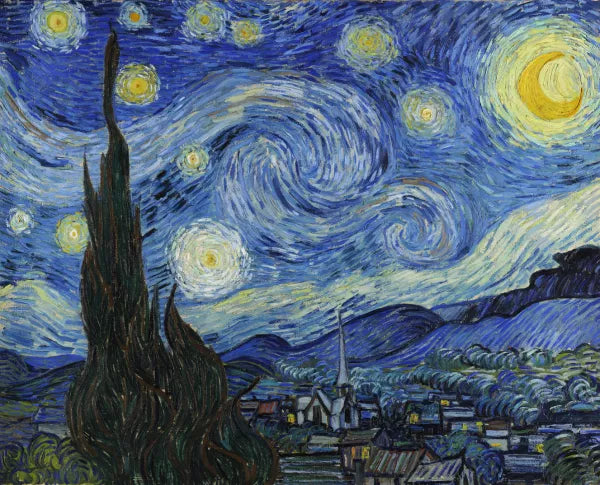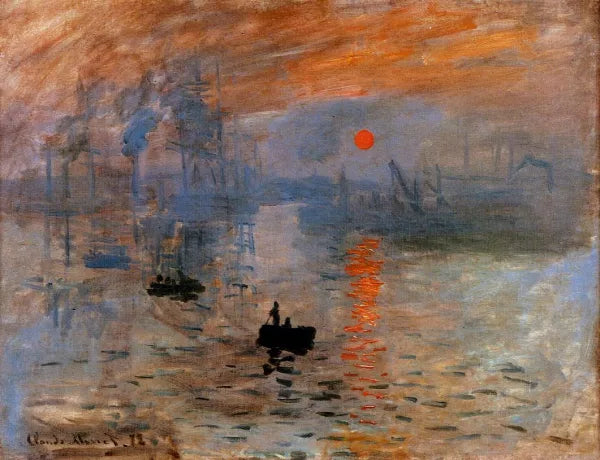“Cleaning” an oil painting sounds simple—until you realize the surface isn’t just paint.
Every hand-painted oil painting is protected by a delicate varnish layer that reacts to moisture and solvents. A few drops of water or alcohol can cloud, soften, or permanently stain that layer within seconds.
So if you’ve ever wondered "Can I use water or alcohol to clean an oil painting?", the short answer is never. Here’s why liquids cause permanent damage to the varnish and how to proceed safely.
The Chemistry: Why Varnish and Pigment Don’t Mix With Water

Oil paintings are made of oil-based pigments sealed under a natural or synthetic varnish (often damar or acrylic resin).
These varnishes are hydrophobic but not waterproof—they repel light humidity but absorb prolonged moisture.
When water sits on the surface, it seeps into microscopic cracks, causing:
-
Tide lines: dull, whitish rings after drying
-
Varnish bloom: cloudy haze after humidity spikes
-
Pigment lift: softened or lifted color under pressure
Safe rule for oil painting cleaning: If it’s wet, don’t use it.
Why Alcohol and Household Cleaners Are Even Worse
Alcohol, vinegar, glass sprays, and “multi-surface wipes” are all solvents.
They don’t just remove dirt—they dissolve the very materials that give the painting its finish.
-
What alcohol does: breaks down the varnish resin, leaving matte, sticky spots.
-
What vinegar or baby wipes do: introduce acids and surfactants that yellow or soften the coating.
-
What olive oil or bread “hacks” do: leave residue that attracts dust, insects, and mold.
These home remedies often appear in online “DIY oil painting cleaning” videos—but they’re the fastest route to permanent damage.
Think of varnish like human skin: dust can be brushed off; chemicals burn.
Debunked: Common DIY Oil Painting Cleaning Hacks
| Myth | Reality |
| “A damp cloth is safe if it’s soft.” | Even minimal moisture can cause tide lines. |
| “Alcohol disinfects and evaporates fast.” | It dissolves varnish and dulls shine. |
| “Baby wipes are gentle.” | They contain surfactants and fragrance oils. |
| “Olive oil or bread revive old paint.” | They trap moisture and attract insects and mold. |
| “Glass cleaner removes grime.” | It strips varnish like paint thinner. |
➡️ Learn what you can use in our safe cleaning guide
What to Do If You Already Used the Wrong Cleaner
If you’ve wiped your painting with water, alcohol, or anything wet—don’t panic, and don’t wipe again.
Follow this emergency response guide for safe stabilization:
Emergency Response: Stabilizing the Painting After Liquid Damage
-
Stop immediately – do not rub or blot.
-
Move to a dry, stable room – 18–24 °C (65–75 °F), low humidity.
-
Lay the painting flat – face up on clean paper towels or foam board.
-
Air-dry naturally – no fans, heat guns, or hairdryers.
-
Photograph the damage – include close-ups in daylight.
-
Contact a conservator – send photos before attempting anything further.
If the painting becomes cloudy or sticky, professional oil painting restoration is the only safe solution.
How to Clean Oil Paintings Safely (The Right Way)

The safest “cleaning” is actually preventive dusting.
Use a soft goat-hair or squirrel brush every few months to remove surface dust—nothing more.
Keep the painting vertical, wear nitrile gloves, and never apply liquid cleaners.
For deep cleaning or varnish removal, always hire a conservator.
Closing Thought
 Water and alcohol are friends to glass, not to art.
Water and alcohol are friends to glass, not to art.
Oil painting care is about patience and dry precision, not speed or shine.
One soft brush, a gentle hand, and the courage to do less—that’s the real secret to keeping color alive.



